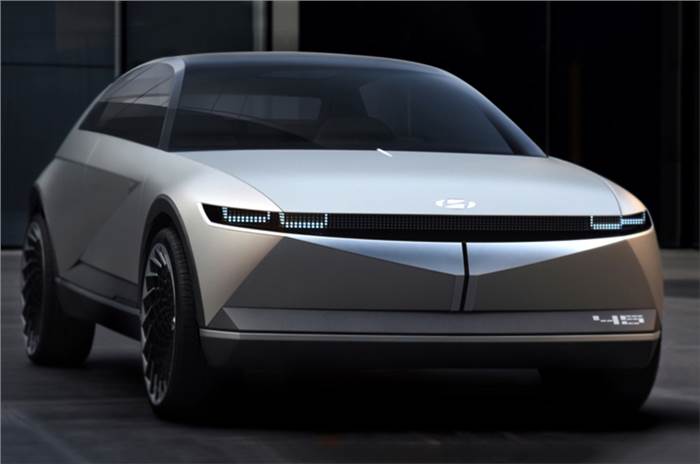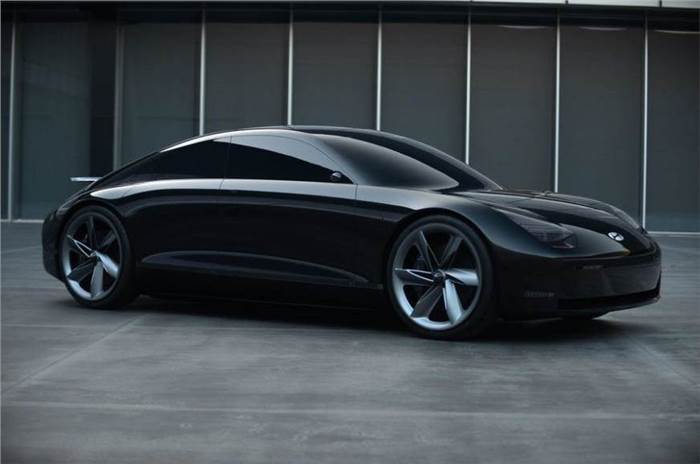- Third unique model based on Hyundai’s new modular EV platform to debut in concept form next year
- Production-spec version of the 45 SUV concept coming in 2021, and will be followed by the production version of the Prophecy sedan concept
- Consistency of styling across the Hyundai range will be achieved through finer design details
Hyundai is readying a family of radical electric cars, all built on the Korean firm’s new modular EV platform but each with very different styling. First will be a production version of the retro-styled 45 concept in 2021, followed soon after by the production version of the sleek Prophecy concept.

The third vehicle will be shown next year as a concept and is said to demonstrate the breadth of the Electric Global Modular Platform (E-GMP).
SangYup Lee, Hyundai’s head of design, said: “The new EV architecture gives us a long wheelbase and a flat floor, and we’re experimenting with unique USPs and how we will stretch it [for various vehicles].
“The 45 is more SUV-style and the Prophecy is the future [sedan] proposal. The third one is more of the space concept: the big one.”
The 45 will sit above the Kona Electric as Hyundai’s first stand-alone electric model. Lee confirmed that the design of the production car – which was recently spotted testing at the Nürburgring – is complete and closely reflects the 1970s-style concept shown last September.
“The show car is a very serious concept,” said Lee. “It’s not a concept that’s never going to make production. That’s how we like to start. I’m quite happy how close the production version is to the show car, and the same thing applies for the Prophecy, too.”
The Prophecy, whose design is currently being finalised, will be a performance-led rival to the Tesla Model 3. Inspired by 1930s streamliners, it looks different from the 45. This move is a result of Hyundai’s desire to avoid the Russian-doll approach taken by so many brands.
Lee commented: “It’s about unexpectedness. Our design philosophy begins with sensuous sportiness. Hyundai is known for value for money, but this isn’t enough. Sensuous sportiness adds a lot more emotional value to the vehicle.
“People have different lifestyles, and we want to have design tailored to those different lifestyles. Looking at the 45 and Prophecy shows our design spectrum.”
Consistency across the Hyundai range will be achieved through finer design details.
Lee explained: “The typical thing is to have the same grille or headlamp shape. This isn’t where we want to create brand consistency. We want to create it in the details – for example, light details. When you look at the 45 and Prophecy, they both have pixel lamps, a series of tiny LEDs which can be animated.”
Hyundai intends to launch 16 new EVs by 2025 to increase its annual EV sales to more than half a million – the equivalent of just over 10 percent of its total sales in 2019. The brand’s global range consists of two EVs, the Kona Electric and the Ioniq Electric. The former is on sale in India at Rs 23.72 lakh (ex-showroom, pan-India) and is the only option in the affordable EV space right now besides the MG ZS EV.
Also see:
Hyundai Creta tops sales chart in May 2020
2020 Hyundai Creta vs Kia Seltos comparison video
2020 Hyundai Creta diesel video review




















.jpg&w=234&h=156&q=90&c=1)



Comments
Member Login
Personal Details
No comments yet. Be the first to comment.